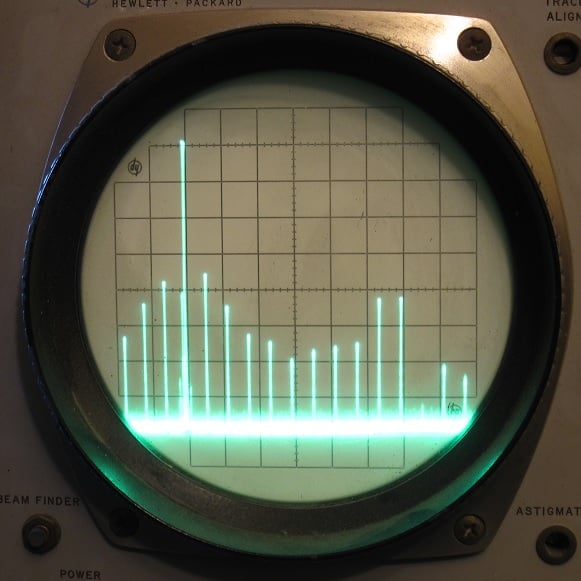Like the title says I want to install a Linux distro on my old laptop. I am currently looking into installing a SSD, but I want to learn a distro for fun! I haven’t been able to find a good current resource aside from the Linux Masters here, so I am actually asking for help on the Internet! What distro is the best!?
EDIT: thanks so much everyone for your recommendations and advice! I installed a couple of different systems before deciding that I think the laptop may be able to support Fedora with KDE plasma (my favorite flavor of the installs so far) and I’m finding it really attractive and easy to use. You will see once I get some more disk space used how the performance holds up! If it runs into trouble I might switch the machine back over to mint with, that one seemed to run really well and was pretty familiar seeming from my Windows days, also seem more low end and booted a little faster. I think I might even end up switching to Linux on my desktop I had so much fun with it last night!! I really appreciate all the information and will probably be experimenting with a more lightweight build on this computer in the future! I’m a Linux user and it was easier than I ever thought! ❤️
How much have you used linux before/what is your goal?
That is the eternal question but no distro is best. The most commonly suggested ones are Linux Mint and Pop OS. I will recommend Bazzite and say to avoid Arch or Arch-based distros.
no distro is best
And the nice thing is this isn’t like MacOS vs Windows. Knowledge gained in one distro is transferable to other distros. Just pick one and get started, you can always change later if you wish.
Get a high capacity usb drive. Load ventoy and copy over all the linux distro you wish to try. There is no best distro, its all user preference.
For beginner, you can try linux mint, ubuntu, fedora etc
Fedora for beginners. Ubuntu-based lost the crown because of Snap bullshit.
Are you talking about plasma Fedora?
The Desktop Environment doesn’t matter much. Whichever you like. Stock Fedora is Gnome, and there is a Spin of practically every desktop available. Try what you think you’ll like.
fedora workstation and plasma have the same status, its no longer the kde “spin”
It’s been a long time since I’ve used 2007 class laptops. In my mind I’d lean towards like Lubuntu or Xubuntu. LXQT or Xfce. It won’t look as modern as GNOME, KDE, Cosmic but they’re good
I have an Asus Eee PC from 2009 running Puppy Linux (as a secondary device).
As already pointed out you will need a leightweight distro and desktop environment.https://distrochooser.de/ (available in English) can help you find the right distro, it takes into account the age of your device, your Linux knowledge, use case and a lot more.
Do you know the specs of this laptop off hand? 2007 would place it in sort of a grey area between 32 bit and 64 bit CPUs. If it is 32-bit, you are likely going to have major issues and I would recommend using something else.
Even if it is a 64-bit CPU, the performance may not be amazing, and running modern browsers with anything less than, say, 4GB RAM could be an issue.
I would recommend something lightweight, such as Linux Mint with the XFCE Desktop Environment. You may need to get even more aggressive about finding something lightweight for something that old, though.
It does have 64
If you’re not afraid to dive straight into minimalism/command line, void linux could be a good choice, especially if the laptop is 32bit because void still has 32bit repos.
Hmmm, wow I am maybe a tiny bit afraid haha. Thank you for the info though. That would be interesting to experiment with!
I’m pretty sure antiX is designed for this specific use, but I have not run it personally. It’s based in Debian stable (which right now is Bookworm and will be Trixie pretty soon). I’m very fond of Debian. It’s not fancy, but it gets the job done.
Objectives of learning and fun?
You do not state noobliness, ease of setup or time to install, number of failures/retries or anything like that.
**EDIT: you did state noobliness later on in comments so . . . i’d go stock debian +lxqt. ****
or all that I’d recommend arch. Do not use archinstall script , that reduces both learning and fun. Resource? follow the archwiki and go through lots of linked pages at each step. If you do wuss out and install stock debian (+lxqt)maybe partition off a spare 10-20GB so you can play around with an arch install after you realise how boring and uneducational the others are (joke)
antiX would be a good choice for that machine.
I have an odd recommendation. Install puppy Linux on it. Years ago, it was my default choice for older machines like this. It runs completely on RAM, has extremely small footprint, extremely snappy and very featureful. I think over the years, the development has stagnated. However, you should be able to get a few years old ISO, copy it to a USB stick and you are good to go. The ISOs are usually in the range of 100-150 MB. Even if your laptop has just 1-4 GB of RAM, this will fly. Oh, by the way, it has most (types of) applications out of the box. It has native support for older hardware.
slackware :)
arch or fedora if it’s x86-64







